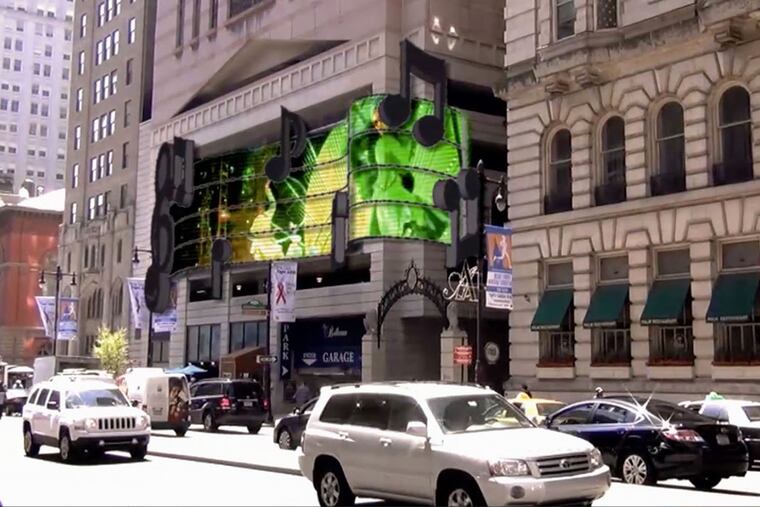Say no to the unbearable lightness of being garish
By Susan Perloff Why are these three proposed signs different from all other signs? They are bigger, bolder, and more ostentatious. They are scarier than a politician on the take. More dangerous than a pothole on your route to work. Uglier than a racist remark in a quiet restaurant.

By Susan Perloff
Why are these three proposed signs different from all other signs?
They are bigger, bolder, and more ostentatious. They are scarier than a politician on the take. More dangerous than a pothole on your route to work. Uglier than a racist remark in a quiet restaurant.
They're SuperSigns, able to affix themselves to a tall Philadelphia building in a single legislative bound. And City Council is scheduled to vote on them Thursday.
The bill in question would allow a zone for "urban experiential displays" (UEDs) - three-dimensional digital billboards - in Center City, even though the City Planning Commission voted 6-2 against them. In my view, an experiential display should be a pedestrian opening a door for a mom with a baby carriage, a teenager picking up trash on the sidewalk, or a person in a wheelchair enjoying the sunshine on Dilworth Plaza. Those I could support.
What I can't support are the 30- to 50-foot-tall signs being manufactured and sold by Catalyst Outdoor of Malvern. The founder of Catalyst told Council that his "multifaceted communication platform" could "add vibrancy in unique commercial corridors."
The "unique commercial corridors" Council is considering are on Broad and Arch Streets, on 12th Street near the Reading Terminal Market, and at other potential locations within the boundaries of the zone.
My eighth-grade Latin teacher would have labeled these monsters what she called us: rude, crude, and barbaric.
Mary Tracy, executive director of both Scenic Philadelphia and Scenic America, is adamantly opposed.
"These signs are the worst forms of outdoor advertising that I've seen in 25 years of dealing with this issue," she says. "They will be in the center of our city, in places they do not belong, and they would be bigger than anything else allowed in the city. Allowing them turns over every ordinance the city has ever passed to outlaw billboards."
A retired city planner warns: "You cannot imagine how bright these things are. They would be far more intrusive individually than if they were clustered as in Times Square."
I love signs. As a writer, I adore them because they use the tools of my trade: words. A good city sign shows which storekeepers and sign-makers can spell. A good highway sign means not having to look at grass and trees all the time. Best are hand-painted signs in small towns, where grammatical errors generate belly laughs.
I collect signs. When I downsized to an urban apartment, I reluctantly abandoned my backyard filled with signs of all sizes. Now my collection is online, thousands of pics in Photoshop of signs from everywhere.
But these shifting video signs, flashing every seven seconds? Don't love them. They would set Center City improvements back 50 years. Might as well put giant billboards in the hands of Rocky at the Art Museum or William Penn atop City Hall. Or above the Valley Green Inn, along the beloved Wissahickon Creek.
If Superman, a strange visitor from another planet, came to Philadelphia with powers and abilities far beyond those of mortal men, and he saw those signs, he'd turn around and leave. Council should vote against this disfiguring bill.